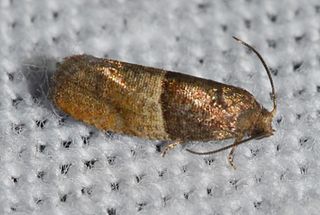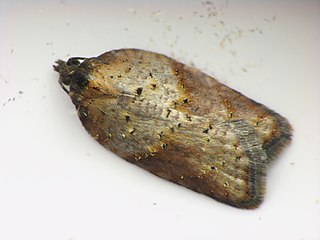
The Archipini are a tribe of tortrix moths. Since many genera of these are not yet assigned to tribes, the genus list presented here is provisional.

Chlidanotinae is a subfamily of moths in the family Tortricidae.

The Cochylini are a tribe of tortrix moths. It used to be classified as the subfamily Cochylinae.
The National Institute of Indigenous Peoples is a decentralized agency of the Mexican Federal Public Administration. It was established on December 4, 2018, though the earliest Mexican government agency for indigenous matters was created in 1948. It is headquartered in Mexico City and headed by Adelfo Regino Montes.
The Awakatek (Awakateko) are a indigenous Maya people located in the municiapality of Champotón, Campeche, México and in the municiaplity of Aguacatán in the department of Huehuetenango, Guatemala, place where they have their original settlement.
The Hodï language, also known as Yuwana (Yoana), Waruwaru, or Chikano (Chicano), is a small unclassified language spoken by the Hodï people of Venezuela. Very little is known of it; its several hundred speakers are monolingual hunter-gatherers. The people call themselves Jojodö or Wįlǫ̈, and their language Jojodö tjįwęnę. The two communities with the most speakers are San José de Kayamá and Caño Iguana, with several hundred speakers total.

Larisa is a genus of moths belonging to the subfamily Olethreutinae of the family Tortricidae. It contains only one species, Larisa subsolana, which is found in North America, where it has been recorded from Alabama, Florida, Georgia, Illinois, Indiana, Kentucky, Maine, Maryland, Massachusetts, Minnesota, Mississippi, Missouri, New York, Ohio, Oklahoma, Ontario, Quebec, South Carolina, Tennessee, Texas, Virginia, and West Virginia.
Pseudogalleria is a genus of moths belonging to the subfamily Olethreutinae of the family Tortricidae.
Eurydoxa is a genus of moths belonging to the subfamily Tortricinae of the family Tortricidae.

Gymnandrosoma is a genus of moths belonging to the family Tortricidae.

The Atteriini are a tribe of tortrix moths.

The Euliini are a tribe of tortrix moths.

The Tortricini are a tribe of tortrix moths.

Los Restos Indígenas de Pichilemu was a 1908 book published by Chilean historian José Toribio Medina.
Pankararú is an extinct language of eastern Brazil. There are 6,000 ethnic Pankararú, but they all speak Portuguese. In 1961, only two elders could remember anything of the language. Today, they live in Brejo dos Padres and other villages of Tacaratu, Pernambuco State. The language was originally spoken between the Moxotó River and the Pajeú River.

The Huni Kuin are an Indigenous people of Brazil and Peru. Their villages are located along the Purus and Curanja Rivers in Peru and the Tarauacá, Jordão, Breu, Muru, Envira, Humaitã, and Purus Rivers in Brazil.

Pentacitrotus tetrakore is a species of moth of the family Tortricidae. It is found in Taiwan.

Eana osseana, common name dotted shade, is a moth of the family Tortricidae.
Harákmbut–Katukinan is a proposal linking the South American indigenous language families Harákmbut and Katukinan. There is reasonably good evidence that the two are related. Jolkesky (2011) also adds Arawan to the family.













